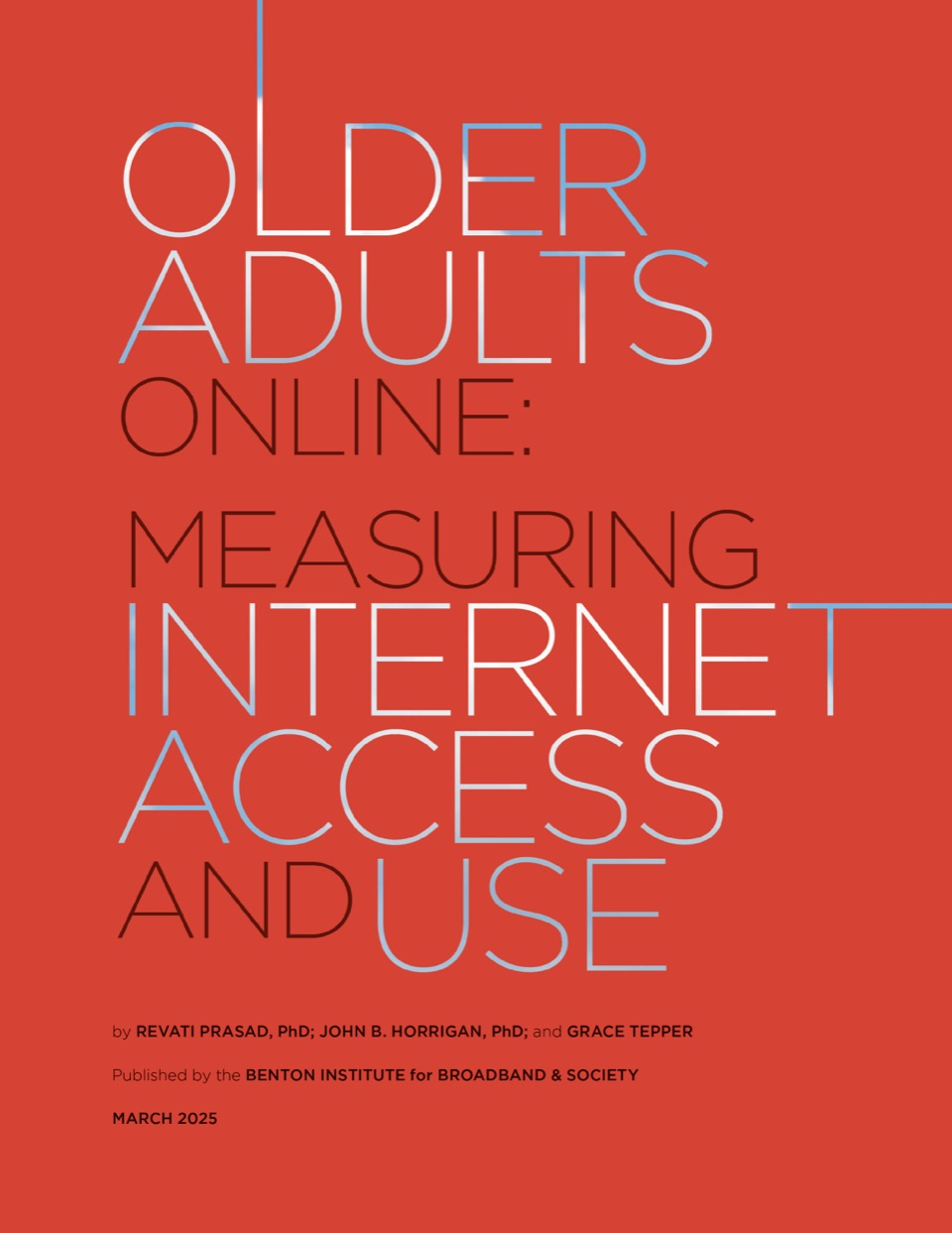John Horrigan
The ACP Boosted Rural Adoption and Helped Keep the Subscription Vulnerable Online
“One more thing” is the line that Detective Columbo typically uttered in the eponymous 1970s detective series; it signaled that Columbo was on the brink of solving the episode’s puzzle. If Columbo were around today, the Affordable Connectivity Program (ACP) may have vexed him had he pondered its impact. Did it move the broadband adoption dial? If so, by how much?
A look at the impact of the ACP on broadband adoption

Measuring Internet Access and Use Among Older Adults
Today, we published Older Adults Online: Measuring Internet Access and Use, guidance to help states develop the indicators and methodologies that will help them measure progress and identify ongoing connectivity gaps and hurdles. Our guide provides an overview of statutory requirements about indicators and measurable objectives from the Digital equity Act (DEA).
The Digital Equity Act (DEA) of 2021, a part of the Infrastructure Investment and Jobs Act (IIJA), establishes programs that aim to ensure that all people “have the skills, technology, and capacity needed to reap the full benefits of our digital economy.” Identifying older adults (those 60 years

A Better Way to Fund USF
There is a political consensus that the United States should continue its nearly century long commitment to assuring that the tools of modern communications are universally accessible and affordable. There is also a consensus that the primary program through which we keep that commitment—the Federal Communications Commission’s Universal Service Fund (USF)—is breaking down.
Moving Toward a Continuum Model for Broadband Affordability
The availability of reliable, high-speed internet throughout the United States has been a focus of policymakers for decades, with the need for an expansive broadband infrastructure listed as “the great infrastructure challenge” of the 21st century by the Federal Communication Commission. However, federal guidelines have never set a benchmark for what “reasonable prices” might mean for residents in each state, and there are no established benchmarks for determining what an affordable level of broadband service would look like throughout the country.
Broadband Affordability is an Ongoing Challenge for Low-Income Households
A new survey from the Benton Institute for Broadband & Society focusing on low-income Americans shows that affordability challenges are pervasive for low-income households, a problem the Affordable Connectivity Program (ACP) helped alleviate for those most in need. The survey finds that:
Findings from a representative sample of 2,535 households whose annual incomes are $50,000 or less.

How the End of the Affordable Connectivity Program is Hurting Low-Income Households and the U.S. Economy
A forthcoming report from the Benton Institute on Broadband & Society examines the impact of the demise of the Affordable Connectivity Program (ACP) on low-income Americans and the affordability of home broadband service. The main findings from the survey are:

Understanding uptake in demand-side broadband subsidy programs: The affordable connectivity program case
This paper hypothesizes that Affordable Connectivity Program (ACP) enrollment decisions are not solely individual, but also influenced by community-wide considerations, such as housing costs, share of occupied houses, presence of anchor institutions such as public libraries, and population density (i.e., whether a place is urban or rural). The paper develops a regression model that predicts ACP enrollment rates among eligible households at the 5-digit zip code geography as a function of the variables discussed above.

